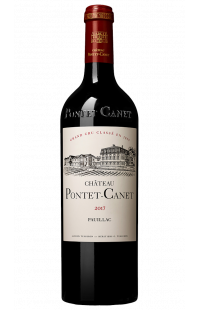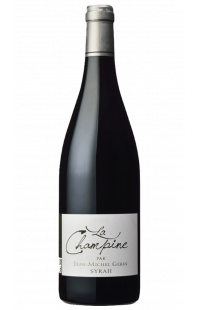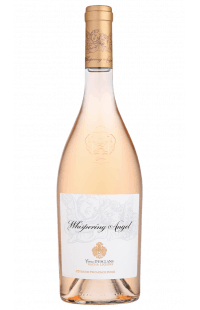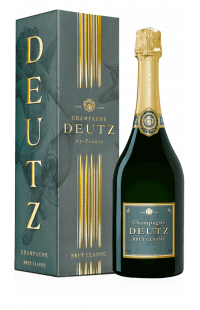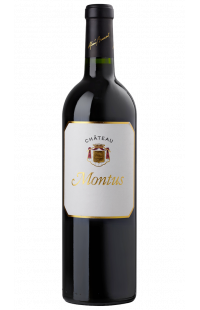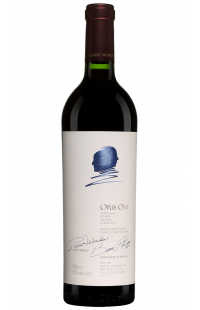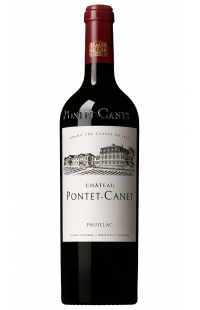- Menu
- All our wines
- Bordeaux
-
Rhône
-
Burgundy
-
Rosés Wines
-
Champagne
- France
-
World
- PRIMEURS
- ORGANIC WINES
Graves WInes
- Discover all our great wines from the Graves appellation red and white -
There are 3 products.

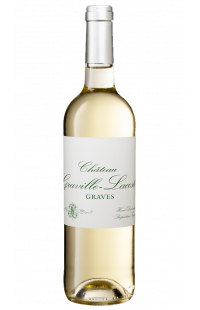
Available in
- Bottle (75cl)
- 12.00€ / bottle- Case of 12 bottles (75cl)
11.00€ / bottle- Magnum (1,5l)
- 25.00€ / magnumTASTING NOTES
Specifications
Benefit of the 12th bottle offered by choosing the format : Case of 12 bottles.
Degressive price applied automatically.
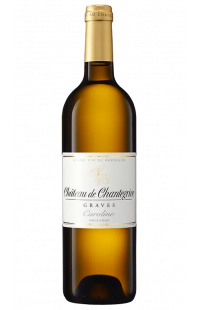
Available in
- Bottle (75cl)
- 21.00€ / bottleTASTING NOTES
Wine Advocate
89-91
J. Suckling
93-94
Specifications

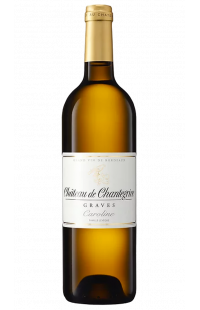
Available in
- Bottle (75cl)
- 21.00€ / bottle- Case of 12 bottles (75cl)
19.25€ / bottleTASTING NOTES
Wine Advocate
88-90
J. Suckling
92-93
Specifications
Benefit of the 12th bottle offered by choosing the format : Case of 12 bottles.
Degressive price applied automatically.
The Wines of Graves: Elegance and Tradition Along the Garonne
Introduction
Nestled between La Brède and Langon, the wine region of Graves enjoys an exceptional geographical location along the banks of the Garonne River. It is in this unique terroir that wines of rare elegance are cultivated, including reds, whites, and sweet wines (Graves Supérieures). With a viticultural history that spans several centuries, the wines of Graves are the fruit of expertise passed down from generation to generation. This article delves deeply into the characteristics, production, and reputation of Graves wines, highlighting what makes them so unique and cherished.
History and Terroir of Graves
An Ancient History
The first traces of viticulture in the Graves region date back to Roman times. The Romans were among the first to recognize the potential of this unique terroir. However, it was during the Middle Ages that viticulture truly flourished in this area, with the expansion of the wine trade allowing Graves wines to become known beyond regional borders.
By the 17th century, Graves wines were already well-established in European markets, and it was during this period that influential producers began promoting the exceptional quality of their wines. The region continued to prosper over the centuries, consolidating its reputation through innovative viticultural practices and meticulous attention to detail.
The Terroir of Graves
The terroir of Graves is one of the most diverse in Bordeaux, which gives the wines from this region exceptional richness and complexity. The term "Graves" refers to gravelly soils composed mainly of rolled pebbles and gravels, resulting from the fluvial erosion of the Garonne River. These well-drained soils favor optimal ripening of the grapes, thus contributing to the quality of the wines.
The region is situated on an alluvial terrace south of Bordeaux, benefiting from a temperate oceanic climate. The proximity of the Garonne also influences the local climate, with moderate temperatures and humidity that promote vine growth while minimizing the risk of frost.
Types of Graves Wines
Red Wines
The red wines of Graves are renowned for their elegance and complexity. They are primarily made from traditional grape varieties such as Merlot, Cabernet Sauvignon, and Cabernet Franc. These grape varieties complement each other, creating balanced wines with aromas of red fruits, spices, and sometimes tobacco or leather.
Graves red wines are characterized by their intense color, well-integrated tannic structure, and aging potential. Thanks to the diversity of soils and microclimates within the appellation, each wine can express a unique personality while remaining true to the Graves identity.
Typical blends of Graves reds often include a significant percentage of Merlot, which brings roundness and suppleness to the wine. Cabernet Sauvignon adds structure and depth, while Cabernet Franc contributes complex aromatic notes.
White Wines
The white wines of Graves are just as prestigious as their red counterparts. They are produced mainly from two grape varieties: Sauvignon Blanc and Sémillon, with occasional additions of Muscadelle. These varieties give Graves whites great freshness, lively acidity, and varied aromas ranging from citrus fruits to white flowers.
Graves white wines are often appreciated for their complexity and ability to age. Sauvignon Blanc imparts notes of grapefruit and lemon, while Sémillon adds hints of honey and white-fleshed fruits. This combination creates balanced whites with a creamy texture and a lingering finish.
Sweet Wines (Graves Supérieures)
Sweet wines, or Graves Supérieures, are a specialty of the region. They are produced from grapes affected by noble rot (Botrytis cinerea), a fungus that concentrates sugars and aromas in the berries. This concentration gives Graves sweet wines their characteristic sweetness and aromatic richness.
Graves Supérieures are generally made from Sémillon, sometimes blended with Sauvignon Blanc. These wines are distinguished by their golden color, aromas of candied fruits, honey, and spices, as well as their velvety sweetness on the palate. They are often served as an aperitif, with desserts, or alongside blue cheeses.
Production Techniques and Innovations
Traditional Methods
The production of Graves wines relies on traditional methods refined over centuries. Winemaking begins with the harvesting of grapes, which is done by hand to ensure that only the ripest and healthiest grapes are selected. After harvesting, the grapes are destemmed and crushed, then fermented in stainless steel tanks or oak barrels, depending on the type of wine and the desired style.
For red wines, maceration is a key process during which the grape juice is in contact with the skins to extract pigments and tannins. The wines are then aged in oak barrels, which impart complex aromas and additional structure.
White wines can be fermented in tanks or barrels, depending on the desired style. Aging in oak barrels is often used to add depth and texture to whites, while tank aging preserves freshness and fruity aromas.
Innovations and Modernity
Despite the importance of traditional methods, Graves producers do not hesitate to incorporate innovations to improve the quality of their wines. The use of modern technologies, such as temperature-controlled fermentation and humidity control systems, allows for better management of the winemaking process.
Additionally, sustainable and environmentally friendly viticultural practices are gaining popularity in the region. Many producers are adopting organic or biodynamic farming techniques to preserve soil biodiversity and reduce the environmental impact of viticulture. These practices contribute to producing high-quality wines while preserving the unique terroir of Graves.
Renowned Producers and Iconic Estates
Historic and Renowned Châteaux
The Graves region is home to several historic châteaux and renowned estates, each contributing to the fame of Graves wines. Among the most famous estates are Château Haut-Bailly, Château de Fieuzal, and Château Carbonnieux.
- Château Haut-Bailly: This prestigious estate is known for its elegant and complex red wines, made primarily from Cabernet Sauvignon and Merlot. Château Haut-Bailly is renowned for its consistent quality and commitment to viticultural tradition.
- Château de Fieuzal: Located in Léognan, this estate is renowned for both its red and white wines. Château de Fieuzal is appreciated for its refined style and ability to produce long-lived wines.
- Château Carbonnieux: This emblematic estate is famous for its white wines, often considered among the best in the region. Château Carbonnieux also produces quality red wines, offering a varied range of expressions of the Graves terroir.
New Talents and Innovative Estates
In addition to historic estates, the Graves region is also home to young talents and innovative producers. These new generations of winemakers bring fresh ideas and modern approaches to wine production while respecting local traditions.
Among emerging producers is the Domaine de Chevalier, which stands out for its commitment to sustainable viticulture and the exceptional quality of its wines. The estate is particularly renowned for its whites, which combine freshness and complexity.
Food and Wine Pairings with Graves Wines
Red Wines and Gastronomy
Graves red wines are ideal companions for a variety of dishes. Their structure and complex aromas pair perfectly with red meats, sauced dishes, and aged cheeses. Here are some pairing suggestions:
- Grilled Meats: Graves reds go well with grilled meats such as steaks, lamb chops, and gourmet burgers. The tannins complement the richness of the meats, while the fruity and spicy aromas enhance the flavors.
- Sauced Dishes: Red wines can also accompany sauced dishes like beef bourguignon or cassoulet. The wine's structure helps balance rich flavors and complex sauces.
- Aged Cheeses: Aged cheeses like Comté, Mimolette, or Roquefort pair well with Graves reds. The wine's aromas complement the robust flavors of the cheeses.
White Wines and Light Dishes
Graves white wines are versatile and suit a variety of light dishes. Their freshness and liveliness make them an excellent choice for summer meals and seafood-based dishes. Here are some pairing ideas:
- Seafood: White wines pair perfectly with seafood such as oysters, mussels, and shrimp. The wine's freshness balances the delicate flavors of the seafood.
- Grilled Fish: Grilled fish like salmon or sea bream are an excellent choice for Graves whites. The wine's fruity aromas complement the flavors of the fish while adding complexity.
- Salads and Vegetarian Dishes: Whites can also accompany composed salads, vegetarian dishes, and vegetable-based preparations. Their lightness and acidity enhance the fresh flavors of the vegetables.
Graves Supérieures and Desserts
Graves Supérieures, being sweet wines, are perfect partners for desserts. Their sweetness and aromatic richness pair well with a variety of sweet treats. Here are some suggestions:
- Fruit Desserts: Graves Supérieures are delicious with fruit desserts like apple tarts, pear crumbles, or clafoutis. The wine's candied fruit aromas harmoniously blend with the sweet flavors of the desserts.
- Blue Cheeses: Sweet wines can also accompany blue cheeses like Roquefort or Stilton. The wine's sweetness balances the powerful taste of the cheese, creating a pleasant contrast on the palate.
- Chocolate Desserts: Graves Supérieures can be served with chocolate desserts like chocolate mousse or brownies. The wine's richness enhances the deep flavors of chocolate.
Conclusion
Graves wines, with their elegance and complexity, embody the best of Bordeaux's viticultural tradition. Whether it's powerful and refined reds, fresh and aromatic whites, or rich and sweet moelleux wines, the Graves region offers a varied range of wines that will satisfy all palates. The exceptional history and terroir of this region are reflected in every bottle, making Graves wines a preferred choice for wine enthusiasts worldwide.
By exploring Graves wines, one discovers not only high-quality products but also a rich viticultural heritage and a passion for the art of winemaking. Whether you are a seasoned connoisseur or a curious enthusiast, Graves wines offer an unforgettable sensory experience and a fascinating glimpse into the Bordeaux terroir.
